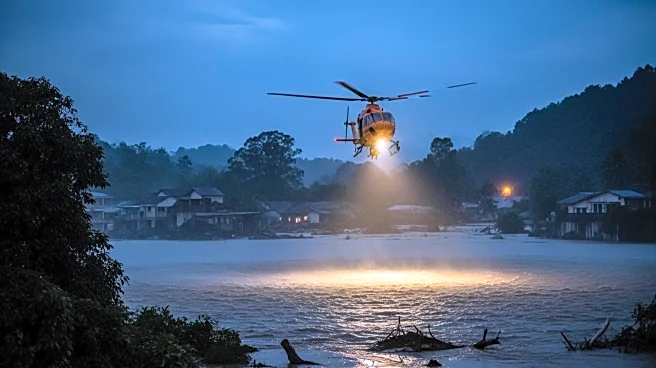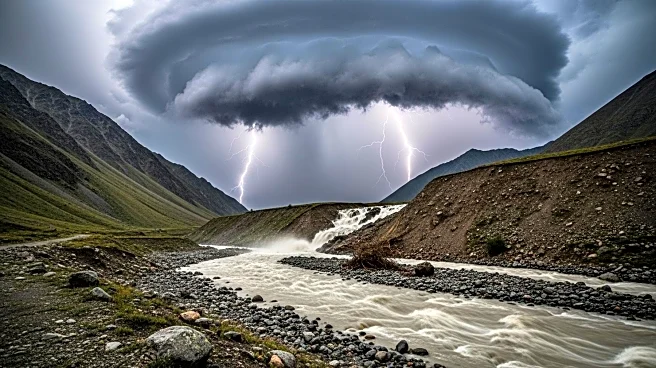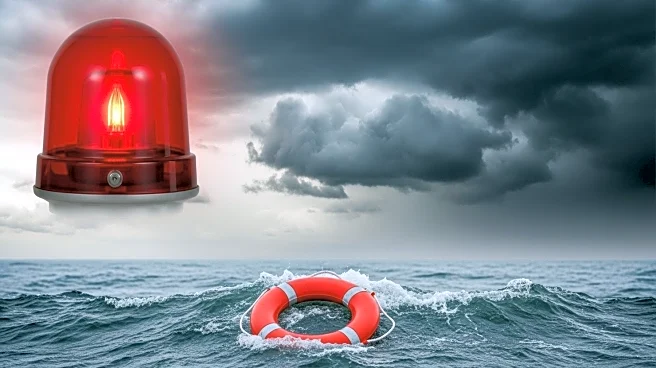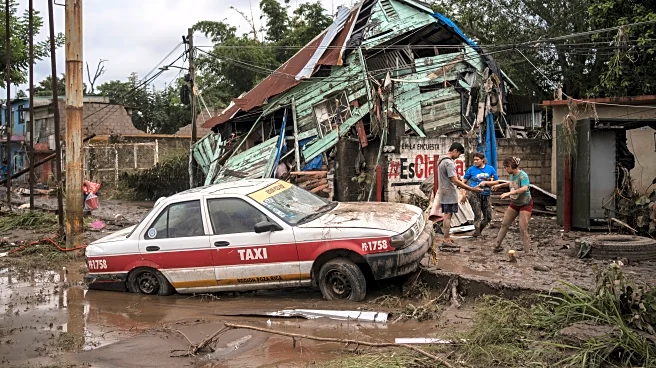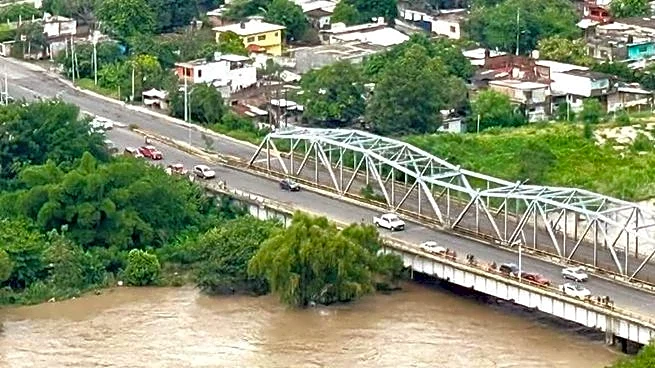What's Happening?
In Mexico, heavy rains have led to devastating floods and landslides, resulting in the deaths of at least 41 people. The torrential downpours, attributed to Tropical Storm Priscilla and Tropical Storm Raymond, have severely impacted central and southeastern regions, including Veracruz, Hidalgo, and Puebla. In Poza Rica, Veracruz, the Cazones River overflowed, causing significant destruction and leaving cars and debris scattered. Thousands of soldiers are working to clear roads and rescue missing individuals, while over 320,000 people have experienced power outages. The storms have damaged or destroyed more than 16,000 homes across affected areas.
Why It's Important?
The severe weather events in Mexico highlight the vulnerability of infrastructure and communities to natural disasters, particularly in regions prone to heavy rainfall and flooding. The impact on thousands of homes and the loss of life underscore the urgent need for improved disaster preparedness and response strategies. The involvement of military forces in rescue operations reflects the scale of the disaster and the challenges faced by local authorities. The economic and social repercussions are significant, as affected communities struggle with displacement, property loss, and the disruption of daily life.
What's Next?
Efforts to restore normalcy in affected areas are ongoing, with military and civil protection agencies focusing on rescue operations and infrastructure repair. Authorities are likely to assess the damage and implement measures to prevent future disasters, including enhancing flood defenses and improving early warning systems. The government may also provide financial assistance to affected families and communities to aid recovery. The situation could prompt discussions on climate change adaptation and the need for sustainable urban planning to mitigate the impact of extreme weather events.
Beyond the Headlines
The disaster in Mexico raises broader questions about climate change and its role in intensifying weather patterns. As storms become more frequent and severe, countries must consider long-term strategies to adapt to changing environmental conditions. The ethical implications of resource allocation and prioritizing vulnerable communities in disaster response are critical considerations. Additionally, the cultural impact on affected regions, including the loss of homes and historical sites, may influence future urban development and conservation efforts.


